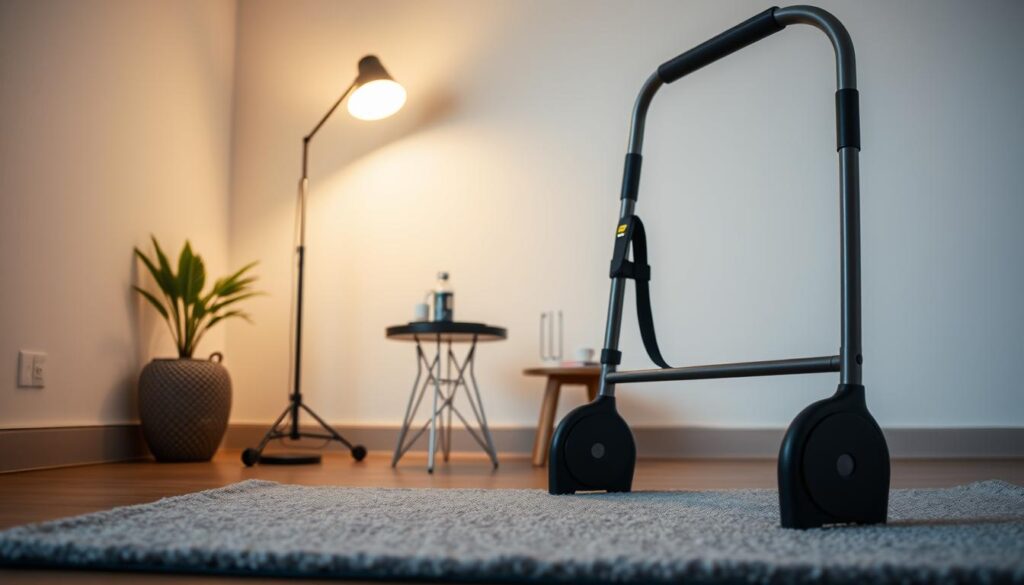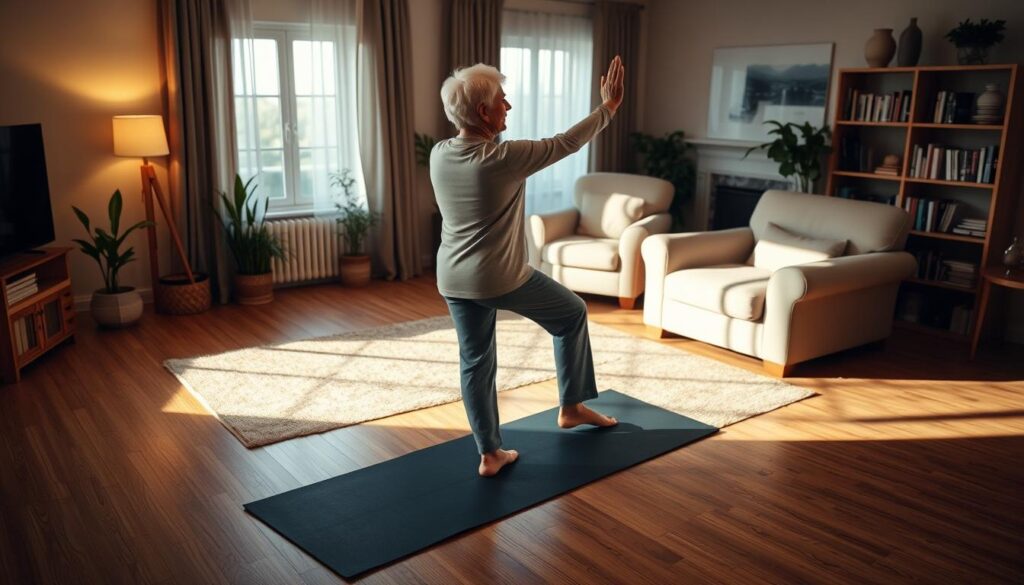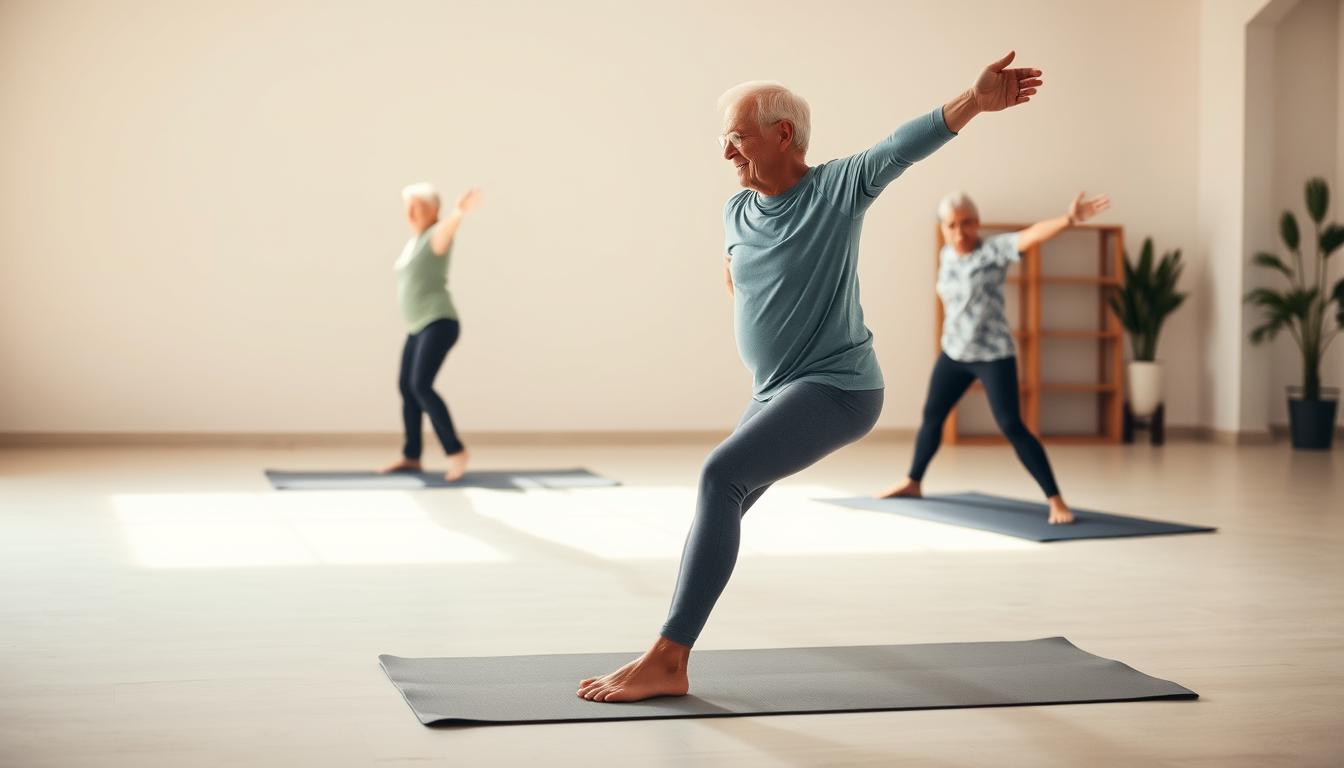You can boost mobility right in your living room with simple, safe routines. No gym membership or fancy equipment needed—just your determination and maybe a dining table for balance. Let’s get real: who wants to brave icy sidewalks or crowded parks when you can march to your own beat at home?
My neighbor Martha started with five-minute laps around her coffee table after knee surgery. Now? She does “laundry basket lunges” while folding clothes—talk about multitasking! Whether you’re a beginner or just hate treadmills, these moves work. And hey, you’ll never have to worry about forgetting your gym socks.
I’ll show you how to use everyday items for support (yes, that ottoman counts). We’re talking low-effort tweaks like pacing during TV commercials or heel lifts while brushing your teeth. Safety first: keep rugs secured and wear shoes with grip—no sock-sliding accidents allowed.
Ready to turn your hallway into a personal track? Let’s make those steps count without counting steps.
Getting Started with Indoor Walking Workouts for Seniors

Let’s turn that living room into your personal fitness track, step by step. No kidding—my friend Carl uses his recliner as a turnaround marker during laps. Smart setup matters more than square footage.
Designing a Safe and Functional Space
Clear pathways first. Move side tables, roll up rugs, and tape down loose cords. For real—a clean 8-foot loop beats tripping hazards. Use furniture like bookshelves or sofas as natural route boundaries.
Mix surfaces to challenge balance. Try carpeted areas for cushioning and hardwood for stability practice. My local community center swears by this method—it “trains your feet to adapt” like outdoor terrain.
Choosing Proper Footwear and Support
Shoes matter indoors too. Look for flexible soles and breathable mesh. The Skechers Go Walk series gets rave reviews at our senior center—lightweight yet grippy enough for tile floors.
| Feature | Ideal for Indoors | Avoid |
|---|---|---|
| Arch Support | Moderate cushion | Flat soles |
| Traction | Rubber patterns | Smooth bottoms |
| Fit | Thumb-width space | Tight toe boxes |
Swap slippers for proper shoes during workouts. Your knees will thank you later. And hey—if you do prefer socks? Add non-slip grips. It really does the trick.
Best Walking Exercises for Seniors at Home

Let’s break down routines you can do right now—no fancy gear required. My buddy Edna, a former phys-ed teacher, calls this “sneaky fitness” because you’ll barely notice you’re working out. Pretty neat, right?
Clockwise Kitchen Laps
Start with five minutes of circling your kitchen island. Alternate directions each lap—it keeps your brain engaged. One retired nurse I know times her sessions using popcorn in the microwave. Three popped kernels? Time to switch legs!
Pace Play: Slow & Steady Wins the Race
Try this interval mix I’ve seen work wonders:
| Time | Pace | Focus Area |
|---|---|---|
| 2 minutes | Leisurely stroll | Posture alignment |
| 1 minute | Brisk stepping | Heart rate boost |
| 30 seconds | Heel-toe precision | Balance training |
Repeat three times. The changing rhythm keeps joints happy and boredom at bay. Pro tip: Use commercial breaks as natural timers!
Furniture-Assisted Stability Drills
Grab that sturdy armchair. Practice shifting weight from toes to heels while holding the backrest. My neighbor does this while waiting for his tea kettle—calls it his “brew-time balance challenge.”
Track progress with sticky notes on the fridge. Three laps yesterday? Aim for four today. Even that “I’m just getting water” shuffle counts. Remember: Consistency beats intensity every time.
Integrating Walking Workouts into Your Daily Health Routine

Ever tried folding laundry while practicing your grapevine? No joke—it’s how my aunt Gloria clocks her daily steps. The trick? Blend movement with mundane tasks so seamlessly you’ll forget you’re exercising. I’ve seen retirees turn coffee breaks into balance challenges using nothing but a kitchen timer and sheer spite.
Balancing Routine Steps with Variety
Spice up your indoor walking with tactical detours. Try this: every time you pass the TV, do three sidesteps. My buddy’s grandma uses her pepper mill as a baton—twist it once per lap to track rounds. Believe it or not, these micro-changes fire up different muscle groups and keep your brain guessing.
| Traditional Walk | Creative Twist | Benefit |
|---|---|---|
| Carry laundry | Add weighted lunges | Builds leg strength |
| Mail retrieval | Heel-toe precision walk | Sharpens balance |
| Phone calls | Pace during conversations | Boosts endurance |
Using Everyday Objects to Enhance Movement
That stack of magazines? Perfect for step-ups. A rolled-up newspaper becomes a balance beam for tandem walks. I’ve watched seniors at our YMCA use dining chairs for improvised obstacle courses—zigzagging between legs like agility pros.
Here’s the kicker: these tweaks improve cardiovascular health without feeling like a chore. One client told me, “I’m basically tricking myself into fitness.” And honestly? That’s the smartest workout hack I’ve heard all year.
Wrapping Up with Tips to Improve Cardiovascular Health Through Walking
Ever wondered how a stroll to the fridge could be your next cardio session? You bet. My buddy’s mom boosted her stamina by adding two extra laps around her dining set each week—now she outpaces her grandkids. Real talk: consistency beats intensity every time.
Start small. If three rounds of your indoor walking workout feel easy tomorrow, try four. Swap slippers for grippy shoes—that alone can “wake up” neglected leg muscles. One client added arm circles during her hallway laps and saw her heart rate jump 15% faster.
Mix it up like Ruth from Phoenix does: alternate slow marches with speed intervals using her microwave timer. Variety keeps your heart guessing without overdoing it. Perfect seniors know this trick—it’s why they’re still winning at bingo nights.
Your turn. Try one tweak this week—maybe posture checks or a new route. The best part? You’re already halfway there. Just keep moving…


